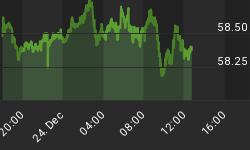It is market with little investment merit, and investors have made it clear that the only thing that counts is more QE3. So now we have arrived at this juncture where we will have our QE or not to QE moment. Of course, investors have been anticipating such an event for 3 months now, and along the way they have become overly bullish. For the markets to push meaningfully higher, the extremes in sentiment that we are currently seeing will have to get more extreme. It is in the extremes of sentiment that new trends are formed. Think of overbought becoming more overbought. So if the Fed is going to push the market higher beyond the current range of the cyclical highs and into a new bullish up trend, then it is likely to happen soon. Conveniently, Federal Reserve Chairman Bernanke speaks at Jackson Hole, WY this week, and it was there 2 years ago that he laid out plans for QE2.
For months, I have been calling for a market top. I see no reason at this point to waiver from that stance. The sentiment picture is still suggestive of a market top. It just isn't the bullish extremes that we are currently seeing, but the fact that sentiment wasn't too bearish at the market bottom over 3 months ago. But we must also recognize that we have the buyer of last resort and the buyer with the deepest pockets (the Fed) distorting market signals. Indicators from the simple (volume) to the complex (ECRI leading indicators) have become unreliable. Remember, this is a market where nothing but QE matters. Of course, with investors already front running the Fed, many believe that QE3 is already priced, and such an announcement will produce the "buy the rumor, sell the news" type of sell off. So what is an investor to do?
Price is the final arbiter. A weekly close below 1407.75 on the SP500 is a double top. It really is that simple. Sentiment indicators, like the "dumb money" will likely rollover as well. A weekly close above 1426.68 on the SP500 will likely lead to an acceleration in price. So pick your poison. Understand where you are on the playing field. If you pick (guess) wrong, don't stay too long.
The "Dumb Money" indicator (see figure 1) looks for extremes in the data from 4 different groups of investors who historically have been wrong on the market: 1) Investors Intelligence; 2) MarketVane; 3) American Association of Individual Investors; and 4) the put call ratio. This indicator is neutral, but just below the extremely bullish level.
Figure 1. "Dumb Money"/ weekly
Figure 2 is a weekly chart of the SP500 with the InsiderScore "entire market" value in the lower panel. From the InsiderScore weekly report: "Insiders continue to display a Sell Bias as sentiment amongst Russell 2000 has fallen in-line with that of their S&P 500 peers (Russell 2000 insiders were previously displaying Neutral sentiment). Selling levels are moderately high at present. Buying volume is respectable but we're continuing to see a number of the same buyers (often 10% Owners or large executive shareholders) and there's an overall lack of quality buying."
Figure 2. InsiderScore "Entire Market" value/ weekly
Figure 3 is a weekly chart of the SP500. The indicator in the lower panel measures all the assets in the Rydex bullish oriented equity funds divided by the sum of assets in the bullish oriented equity funds plus the assets in the bearish oriented equity funds. When the indicator is green, the value is low and there is fear in the market; this is where market bottoms are forged. When the indicator is red, there is complacency in the market. There are too many bulls and this is when market advances stall. Currently, the value of the indicator is 70.38%. Values less than 50% are associated with market bottoms. Values greater than 58% are associated with market tops. It should be noted that the market topped out in 2011 with this indicator between 70% and 71%.
Figure 3. Rydex Total Bull v. Total Bear/ weekly
TheTechnicalTake offers a FREE e-newsletter: HERE
















